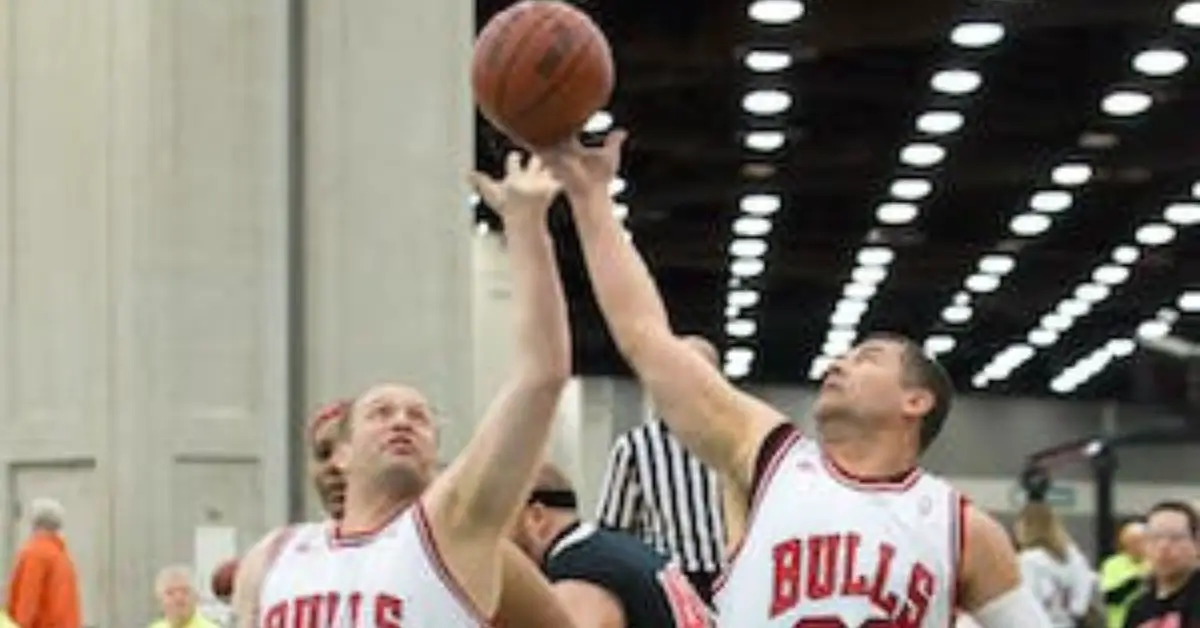Tagging Up in Baseball: The Essential Guide to Mastering This Key Play
What is tagging up in baseball and how to do it effectively? Learn the rules of tagging up, techniques, and important tips for implementing it successfully from our guide.
The concept of tagging up is crucial in baseball strategy, allowing for players to exploit potential scoring opportunities while minimizing the risk of being caught out. This fundamental rule requires runners to carefully observe outfield catches and make split-second decisions to either advance or retreat.
Understanding when to tag up is key for base runners, as it can mean the difference between securing a run for their team or ending the inning. For those new to baseball or brushing up on their knowledge, this game mechanism is a blend of timing, anticipation, and situational awareness, encapsulating the dynamic tension found within America’s beloved pastime.
The Essentials Of Tagging Up
The Essentials of Tagging Up in baseball can be a game-changer. It’s a rule often overlooked by fans but crucial for players. Mastering this skill ensures base runners advance safely while abiding by the rules. It also gives teams a strategic advantage by making the most of catchable balls hit into the outfield. Let’s round the bases on what tagging up means and the rules that govern this smart play.
Defining The Tag-up
Tagging up is a fundamental yet strategic aspect of baseball. When an outfielder catches a ball, runners on base must touch their current base before advancing. This simple act can mean the difference between scoring a run and getting out. It’s not just about speed; it’s about timing and awareness. A successful tag-up can put players in the perfect position to exploit the outfielder’s actions.
Rules And Regulations
- When a Fly Ball Is Caught: Runners must tag up after the ball is in the fielder’s glove.
- Leaving Early: Damage can happen if runners leave the base too soon. Umpires can call them out.
- Touching the Base: The base must be touched with any body part after the catch.
- Forced Moves: A tag-up isn’t needed with a forced move. Runners need to focus on reaching the next base.
- Throwing Errors: Errors can yield extra bases. Runners should watch for errors as they tag up.
- Disputes: Close calls lead to disputes. Instant replay or an umpire conference can resolve them.
Historical Perspective On Tagging Up
The term “tagging up” has been a critical part of baseball for decades. It refers to the moment a runner on base waits for a fly ball to be caught before advancing to the next base. Understanding its history highlights how the game has evolved and showcases strategic plays that have become etched into sporting legend.
Evolution Of The Rule
Baseball’s rules have seen many changes since the game’s inception. The “tag up” rule, pivotal in preventing early leads and maintaining order, is no exception. This regulation ensures a fair chance for fielders to make a play without the runner gaining an undue advantage.
In the early days, the nuances of tagging up were not formally established, leading to a variety of interpretations. As baseball’s popularity grew, the need for standardized rules became evident. Over time, regulations were refined to strike a balance between offensive opportunity and defensive strategy.
Memorable Tag-up Plays
- Reggie Jackson’s 1972 World Series Performance: His intelligent tag-up helped seal a victory for the Oakland Athletics, showcasing the rule’s strategic depth.
- 2014 NLDS Game 2, Matt Carpenter: A smart tag-up from Carpenter turned the tide for the St. Louis Cardinals against the Los Angeles Dodgers, underlining the rule’s game-changing potential.
- Ken Griffey Jr.’s Dash in 1995 ALDS: Griffey Jr.’s iconic sprint home after tagging up helped the Seattle Mariners triumph over the New York Yankees, cementing his place in baseball history.
Strategic Importance Of Tagging Up
The strategic importance of tagging up in baseball cannot be overstated. It’s a tactic where base runners touch their current base after the ball is caught, before running to the next base. This strategy is pivotal in close games. By mastering when and how to tag up, teams can turn fly-outs into opportunities for advancement or scoring runs.
Influence On Game Dynamics
Tagging up effectively alters the flow of the game. It impacts both defensive positioning and offensive choices. Understanding this influence helps teams exploit gaps and anticipate plays. Here’s how:
- Forces quick decisions from outfielders.
- Can create scoring opportunities on sacrifice flies.
- Shifts the defensive focus, often causing a rush in play.
Advantages In Offensive Strategy
Tagging up serves multiple offensive functions. It applies pressure on the defense and maximizes runner positions. Let’s delve into these advantages:
| Advantage | Explanation |
|---|---|
| Potential for Extra Bases | Runners can move into scoring position or score on deep fly balls. |
| Disrupts Double Plays | Promotes safe advancement, reducing double play risks. |
| Enhances Scoring Chances | Boosts possibility of runs on subsequent hits or errors. |
The Art Of The Timing
The Art of the Timing in baseball is like a perfectly choreographed dance. It involves knowing exactly when to move and when to stay put. During a baseball game, tagging up can turn a simple fly ball into a strategic play. It’s a moment rife with anticipation, demanding keen foresight and impeccable execution.
Reading The Fielder
A successful tag-up begins with reading the fielder. Players must observe the fielder’s position, body language, and arm strength. Batters scout the fielders to predict where the ball will land. Runners on base rely on these cues to make their move. They look for signs like a backpedaled stance or an off-balance catch, which can signal a perfect tagging opportunity.
- Position and speed of the fielder
- Direction of the catch
- Fielder’s body language and readiness to throw
Calculating The Jump
The key to calculating the jump is to anticipate the fielder’s throw. Runners gauge the fielder’s momentum and prepare to tag up. By timing their takeoff, they maximize their chance of advancing to the next base.
| Moment of Catch | Runner’s Position | Decision to Tag Up |
|---|---|---|
| Immediate | On base, ready to sprint | Go if the fielder is off |
| Delay | Lead off base | Stay if the fielder’s strong |
Physical And Mental Preparation
To excel at tagging up in baseball, players must be sharp both physically and mentally. Achieving the perfect tag requires quick reflexes, agile movements, and a strategic mindset. In this section, we delve into the critical importance of player conditioning and the psychological aspects of tagging up.
Player Conditioning
Baseball players need to maintain peak physical condition to be successful on the field. For outfielders, especially, the ability to move quickly and decisively can make the difference between a successful tag and a missed opportunity.
- Strength training: Builds power and endurance.
- Speed drills: Enhance quickness to bases.
- Agility exercises: Improve directional changes.
- Simulated plays: Create real-game scenarios.
Consistent practice of these components builds a foundation for players to react instinctively.
Psychological Aspects Of Tagging Up
Tagging up is not just a test of physical skill but also a mental challenge. Players must read plays correctly and anticipate their opponents’ next moves.
| Mental Skill | Role in Tagging Up |
|---|---|
| Focus | Keeps attention on cues from coaches and other players. |
| Decision-making | Dictates when to tag and when to hold. |
| Confidence | Enables quick, decisive actions under pressure. |
| Adaptability | Helps adjust strategies mid-game. |
By combining focused training with mental resilience, a baseball player becomes adept at the art of tagging up.
Coaching Tips For Tagging Up
In the dynamic world of baseball, tagging up is a crucial skill. It can mean the difference between scoring that vital run or facing an out. For coaches, teaching players to master this technique is vital, and it takes more than just verbal instructions.
Drills To Improve Technique
Practice makes perfect, and with tagging up, it’s all about the right drills. Here are my top exercises to enhance players’ tagging abilities:
- Base Running Drills: Let players practice sprinting from the base to catch the fly ball and then tagging up.
- Visual Cues: Use colored bases or distinct markers as visual indicators for where players should stand when preparing to tag up.
- Simulated Games: Create a game-like scenario where players can practice tagging up in a pressured environment.
Instilling Discipline In Players
Discipline is the backbone of any successful tagging up strategy. Coaches should emphasize these key points:
- Attention to Detail: Players must be vigilant, observing the ball’s flight and the fielder’s actions.
- Listening Skills: Players need to react quickly to their coach’s instructions during the game.
- Patience: Knowing when to wait for the right moment to tag up is as important as the action itself.
By regularly incorporating these drills and focusing on discipline, players will become adept at tagging up, giving the team a competitive edge.
Common Mistakes And How To Avoid Them
Even seasoned baseball players can slip up on the basics like tagging up. This part of the game holds key moments. So, let’s dive into the most common mishaps and methods to steer clear of them. Recognizing these snags and practicing vigilance in these situations will keep players poised under pressure and ready to capitalize on opponents’ oversights. Stay alert, think ahead, and fine-tune your base-running skills to maintain your team’s competitive edge.
Premature Departures
A player often takes off before the catch in anticipation. Impatience leads to early departures, costing your team valuable positions. To keep this in check, always keep your focus on the outfielder. Wait until the ball hits the glove. Drill this during practice so when game day comes, your muscle memory keeps you glued to the base until the precise moment.
Misjudging Fly Balls
It’s tricky to read the ball’s trajectory at times. A misjudged fly ball can result in a double play rather than an advance in bases. Practicing with your coach on fly ball prediction can improve your judgment. Work on assessing the ball’s height and the fielder’s positioning. Keeping close to the base until you’re sure allows for a swift retreat if needed. Always prioritize maintaining the base over the risk of an out.
- Maintain visual contact with the ball until caught.
- Anticipate the fielder’s throw; know where it’s likely headed.
- Use the base coach’s guidance to make split-second decisions.
Regular training with focus on these aspects can significantly reduce errors. Learn the cues, enhance your reaction time, and you’ll master the art of tagging up.
Analyzing The Outfielders
Within the energetic world of baseball, dissecting the prowess of outfielders remains crucial for understanding the game. As runners tag up, anticipating their next sprint, the spotlight falls on those guarding the distant corners of the field. We explore the strength and skill outfielders wield to shape the fate of would-be scores.
Understanding Arm Strength
Outfielders must exhibit formidable arm strength. This physical asset determines the distance and speed of their throws. Strong throws can deter runners from taking extra bases. Outfielders often engage in intensive training to enhance this critical attribute.
- Javelin drills improve throw mechanics.
- Weight training boosts overall muscle power.
- Long toss exercises stretch out arm capabilities.
Anticipating Throw Accuracy
Accuracy couples with strength to complete an outfielder’s throw. The capacity to foresee where a throw must land encompasses visualizing the runner’s position and the ball’s trajectory. Precision in an outfielder’s arm can clip the wings of advancing runners, keeping the score in check.
| Component | Significance |
|---|---|
| Footwork | Positions the body for an accurate throw. |
| Release point | Affects throw path and eventual landing spot. |
| Follow-through | Ensures the maximum accuracy and power. |
Base Running Skills Enhancement
Tagging up in baseball requires speed and agility. Mastering these attributes isn’t just about natural talent but also about structured training. Elevating your base running game to the next level involves focused exercises. The aim is to boost your quickness and nimbleness on the field. This means being able to dash from base to base with ease and react swiftly to plays. Ready to steal more bases and score more runs? Embrace these base running drills designed to enhance your core abilities.
Speed TrainingSpeed Training
Explosive speed turns good base runners into great ones. The key lies in effective speed training. By integrating specific drills, a player can make significant leaps in their ability to sprint. Consider the following approaches to amplify your speed:
- Sprint intervals: Alternate between running at full speed and jogging.
- Resistance training: Use parachutes or sleds to build power.
- Hill sprints: Run uphill to increase leg strength.
Each method contributes uniquely to your acceleration and speed endurance. Deploy these regularly during practice sessions.
Agility WorkoutsAgility Workouts
Sharpening agility defines a player’s ability to change direction effortlessly. Agile runners can quickly adapt to unexpected situations, making them invaluable on base. Incorporating agility drills is crucial for improvement:
| Drill | Description | Benefit |
|---|---|---|
| Ladder Drills | Run through agility ladders in various patterns | Improves footwork and coordination |
| Cone Drills | Weave around a series of cones set in different layouts | Boosts lateral movement and quick pivots |
| Shuttle Runs | Sprint to a point and back, then to a further point and back | Enhances explosive starts and stops |
Combined, these speed and agility workouts can substantially benefit your base running skill set. Dedicate time each week to these exercises, and witness the transformation in your game play.

Credit: www.ebay.com
The Role Of Umpires In Tagging Situations
In the fast-paced world of baseball, umpires play a crucial role during tagging situations. They ensure the game’s rules are upheld. Their decisions on safe or out calls can change the course of the game. Understanding their responsibilities helps to appreciate the complexity and skill involved in baseball officiating.
Making The Call
Accuracy in making the call is vital for umpires. They must watch closely as runners and fielders make their moves. When a tag play occurs, the umpire’s call considers several factors. These include possession of the ball by the fielder and the runner’s relation to the base.
- Quick judgment is essential.
- Umpires need clear views of the play.
- Communication with other umpires must be precise.
Positioning And Perspective
An umpire’s position is key to making the right call. Optimal positioning gives the best view. Each umpire is responsible for specific areas on the field.
The perspective gained from this positioning allows umpires to see:
| Aspect | Importance |
|---|---|
| Ball control | Ensures fielder has the ball |
| Tag | Confirms physical contact |
| Runner’s base contact | Checks runner’s position in relation to the base |
The umpire’s perspective can impact the call. Positioning ensures fairness and accuracy in every play.
High-tech Training Tools And Analytics
Baseball is embracing technology like never before. Coaches and players now have access to high-tech tools that offer deep insight into every aspect of the game, including the crucial moments when runners tag up. These tools provide a competitive edge and a detailed understanding of play execution.
Video Analysis Software
Video analysis software has transformed baseball coaching. It breaks down every second of game footage. Coaches and players study this footage to improve performance. Here is what the software offers:
- Frame-by-frame playback to catch subtle details during tag-ups.
- Overlay graphics highlighting player positions and movements.
- Ability to compare and contrast player techniques over time.
Teams use these insights to refine their strategy and perfect the art of tagging up.
Statistical Data On Tag-ups
Analytics now plays a major role in baseball, particularly concerning tag-ups. Statistical data provides a numerical edge in understanding this play. Key metrics include:
| Stat | Description | Impact |
|---|---|---|
| Success Rate | Percentage of successful tag-ups | Player’s judgment and speed |
| Average Lead-Off Distance | Distance from the base during the pitch | Time reduction in reaching the next base |
| Outfielder Arm Strength | Average throw speed to the base | Difficulty level for opposing players |
Teams use this data to make informed decisions and improve their base-running tactics.
Experienced Players’ Insights
The art of tagging up in baseball provides thrilling moments. Seasoned players offer valuable perspectives. Their strategies and instincts enrich our understanding. Let’s delve into the wealth of knowledge from veterans on the bases and those helming the team from the dugout. Experience molds players into savvy base runners and coaches into tactical maestros. Gain unique insights from those with years on the diamond.
Interviews With Seasoned Base Runners
- Understanding the pitcher’s rhythm: Veterans stress timing the pitcher’s moves.
- Anticipate the outfielder’s throw: It’s about predicting ball trajectory and strength.
- Mastering the lead-off: A larger lead can be risky but rewarding.
One player shared a story. In a tight game, he tagged up on a shallow fly ball. His jump-off the base was timed perfectly. He slid under the tag, securing a crucial run. His advice: “study the fielders’ arm strength.” It’s crucial for knowing when to sprint home.
Advice From Professional Coaches
Coaches play a pivotal role. They shape the instincts of base runners. Their strategies often turn games around. The advice they share is a goldmine for any player looking to improve.
| Tip | Insight |
|---|---|
| Knee-Deep in Game Theory: | Coaches highlight the mental battle. It’s chess with cleats and leather gloves. |
| The Score Dictates Strategy: | Your actions on base change with the scoreboard. Take note of the innings left. |
| Preparedness is Key: | Drills matter. Repetition breeds instinct. Instinct leads to stolen runs. |
A seasoned coach recalled a game-changing moment. His player was on third. A shallow pop fly to left field was caught. The runner tagged and dashed. The coach’s guidance was clear – “run fast, slide early.” The moment showcased the value of anticipation and courage.
Cultivating Game Intelligence For Smart Plays
In baseball, the art of smart plays often comes down to a player’s game intelligence. It’s about recognizing the situation and making the right move swiftly. This is especially true for the tactic of tagging up, where players must be capable of quick thinking and sharp decision-making while the ball soars in the outfield.
Situational Awareness
Understanding the game layout is key to success in baseball. Players thrive when they can anticipate and react to on-field action. Situational awareness involves numerous factors:
- The number of outs
- Position of fielders
- Strength of the batter
- Depth of the hit ball
With each pitch, runners on base must analyze these factors. They must decide whether to tag up or dash to the next base. They review these elements in mere seconds, and their choice can alter the inning’s outcome.
Split-second Decision Making
In tagging up, time is of the essence. This move allows base runners to advance after a flyball is caught. They must be keen, prepared to bolt the moment the outfielder catches the ball. This decision depends on:
- The runner’s speed
- The catcher’s arm strength
- The ball’s trajectory
Quick decisions like these illustrate the player’s mental sharpness. Correct choices lead to extra runs, a secure lead, or even a game-winning score.
Runners must constantly evaluate and act without hesitation. Their ability to do so reflects the high level of game intelligence critical to baseball success.
Credit: www.gq.com

Credit: www.nytimes.com
Frequently Asked Questions On Tagging Up In Baseball?
What Does Tagging Up Mean In Baseball?
Tagging up in baseball refers to a base runner’s action of remaining on their base until a fielded ball has been caught, after which they may attempt to advance to the next base.
Do You Have To Tag Up After Every Pitch?
You do not have to tag up after every pitch in baseball. Tagging up is only required on a caught fly ball before advancing to the next base.
What Does Tagged Out Mean In Baseball?
“Being tagged out in baseball occurs when a fielder touches a runner with the ball, resulting in the runner’s elimination from play. “
Conclusion
Mastering the art of tagging up can significantly elevate a player’s on-field savvy. By understanding when and how to tag up, baserunners advance with precision, impacting the game’s outcome. Embrace this skill to become a strategic asset to your team and a tougher opponent on the diamond.

Hello, I am Mark Hertz a full-time blogger and digital content creator. My passion and profession is blogging and sharing with this blog various ways to make money online from internet.







